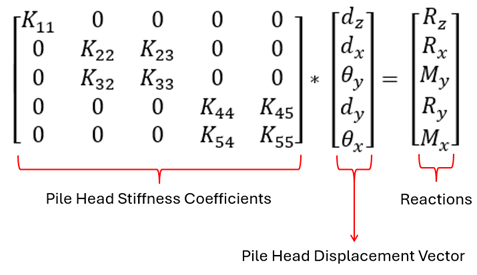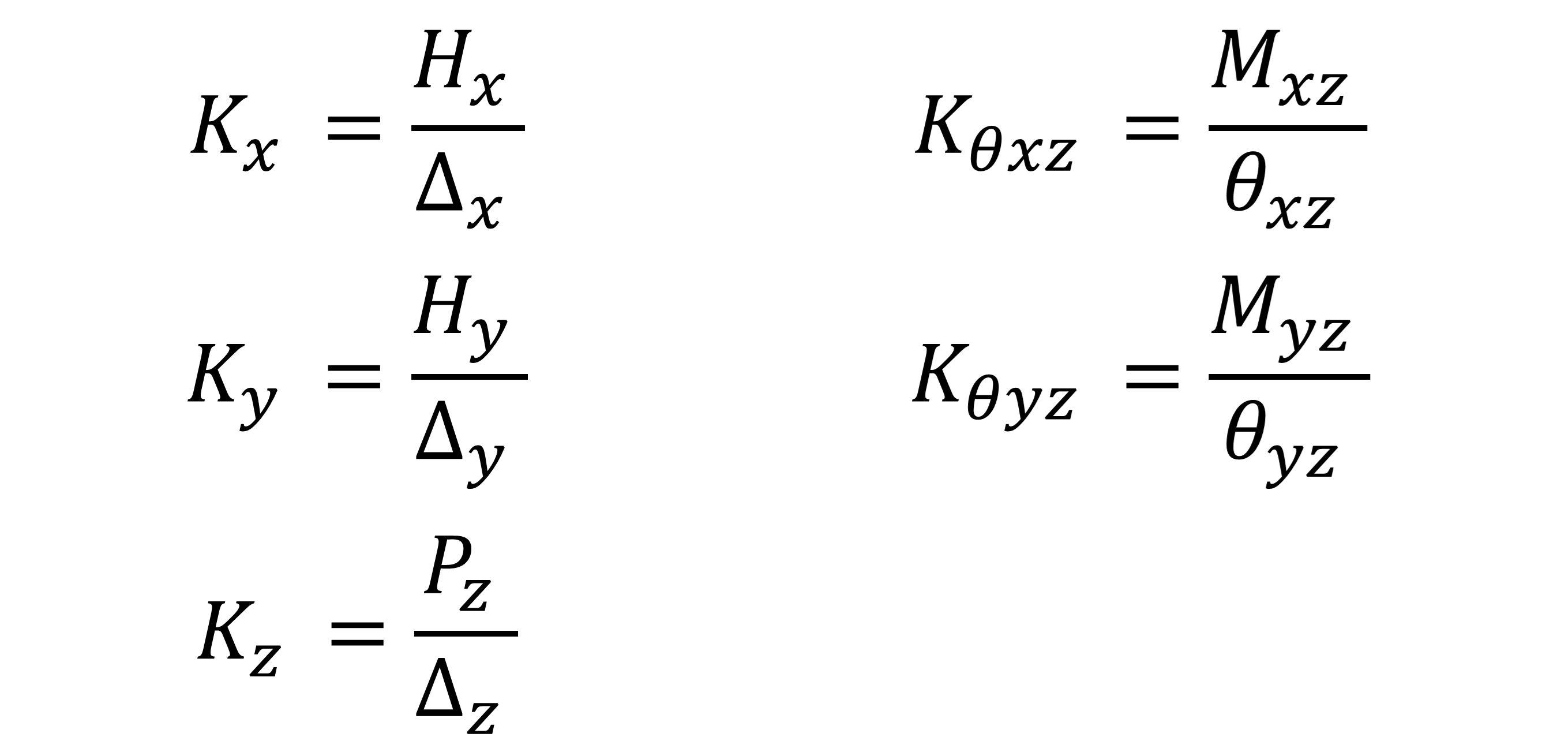Advanced Options
The following advanced analysis options are available in RSPile (available in Axial and Lateral modes only):
- Stiffness Matrix Calculator
Pile Head Stiffness matrices are generally required by structural engineers when modeling foundations. RSPile can evaluate the lateral and axial stiffnesses of a pile by incrementing the loads applied at the pile head and computing the reaction for each load level.
- Simplified Spring Constants
If the loading is uncoupled and the engineer needs spring constant for each type of loading, you can use simplified spring constants, which are obtained from the ratio of the pile force or moment reaction to the pile deflection or rotation.
As below:
- Pushover Analysis (Available in Lateral Analysis mode)
Pushover is a non-linear analysis to assess the lateral pile capacity under horizontal loads. The load is increased until the collapse of the pile. The results of the pushover analyses are capacity curves identified by the variation of the shear force in function of the displacement of the top pile. This type of analysis can also be used to determine what is the maximum load of a pile for certain displacement. Normally the maximum displacement will be specified by an engineering based on certain criteria (i.e Building Code), Another example is that it can be used to determine value of spring stiffness that can be used in other structural program. - Pile Length Analysis (Available in Lateral and Axial Analysis modes for single section pile types only)
Pile Length Analysis is a feature in RSPile that enables users to compute the pile response of the same pile type for a range of pile lengths. This feature can help engineers find the optimal length for the design of their pile. - Resistance Graphs (Available in Lateral and Axial Analysis mode)
Resistance graphs can be generated in RSPile by subjecting a pile to lateral soil movements. This type of analysis is common for piles used in slope stability where the soil movement is due to slope slippage. The method consists of computing the soil reaction as a function of the relative displacement between the pile and the soil.